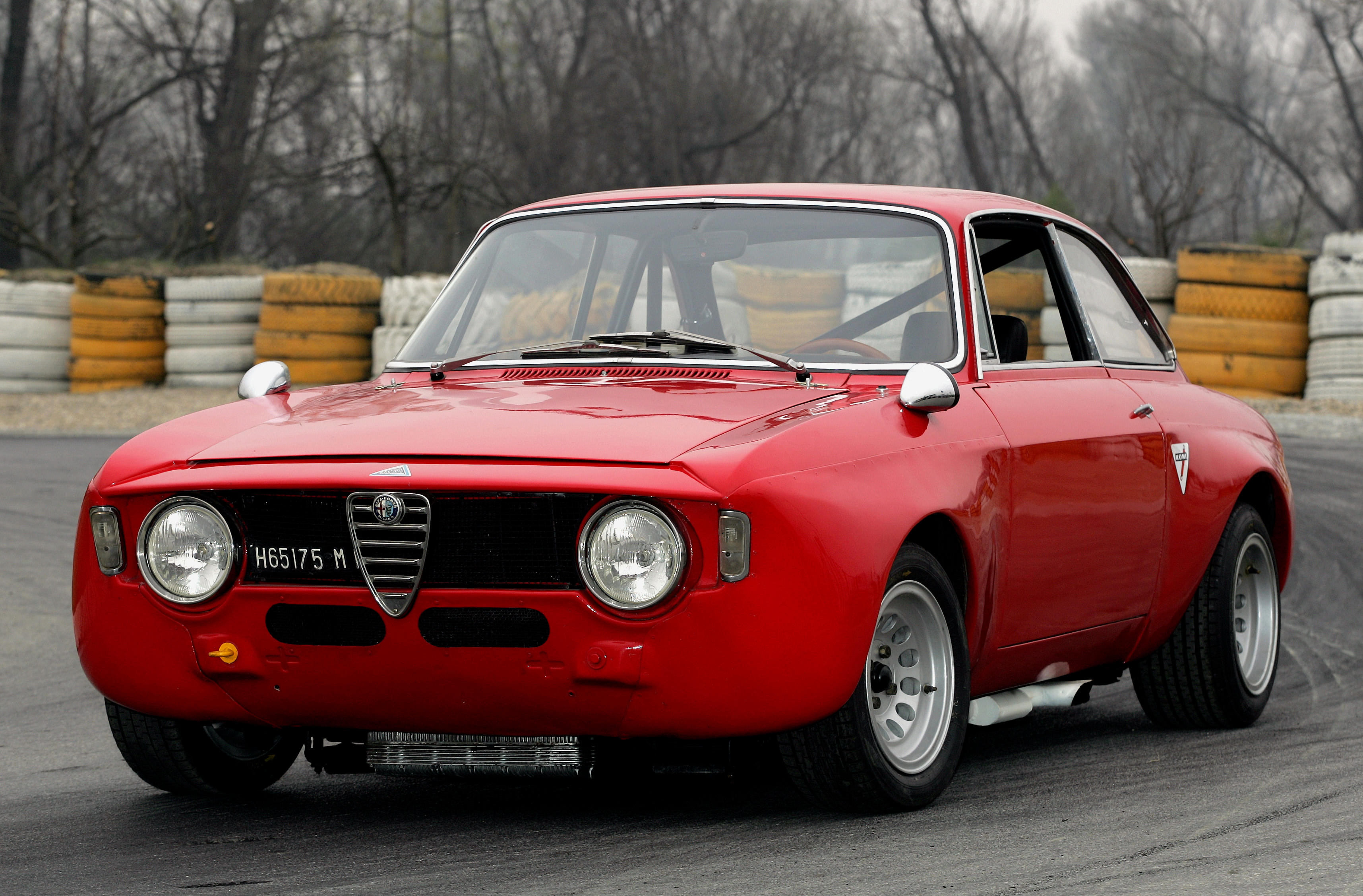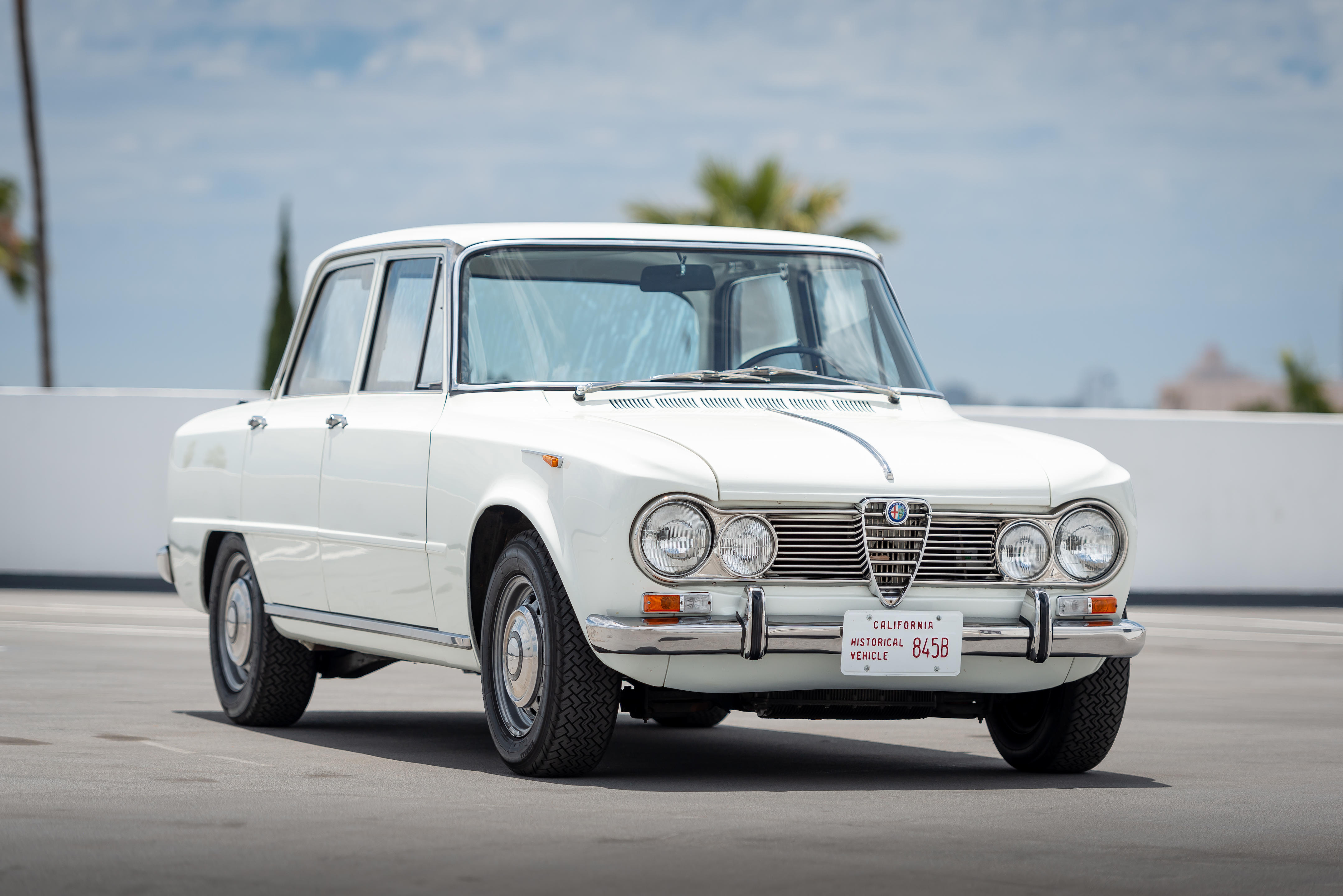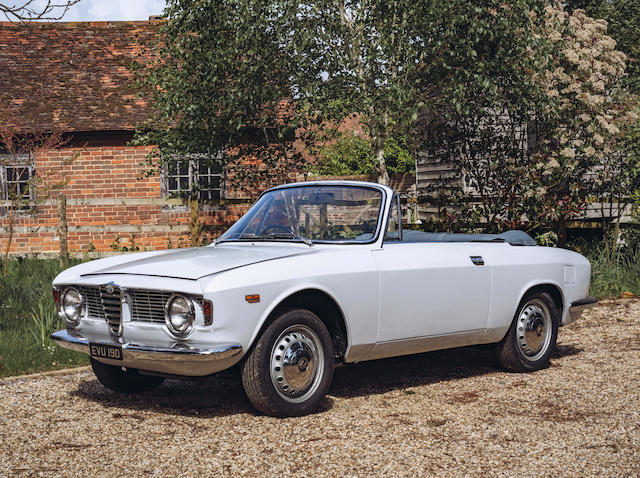With the introduction of the Giulietta in 1954, Alfa Romeo established the 'small car, big performance' formula which would characterise the Milanese marque's finest offerings from then on. Alfa's classic twin-cam four was downsized to 1,290cc for the Series 750 Giulietta, gaining an alloy cylinder block in the process. The debutante Sprint Coupé was soon joined by Berlina and Spider versions, and then in 1959 came the ultimate Giulietta - the Sprint Speciale. These model designations and body styles were carried over into the improved 101 Series Giuliettas produced from 1959 and continued when the range was upgraded to Giulia status in 1962. Outwardly almost indistinguishable from the outgoing Giulietta, the Series 101 Giulia boasted a more powerful and much less fussy 1,570cc engine in addition to welcome improvements to the previously feeble heating arrangements. Despite their boxy, unitary construction body, the Giulietta and Giulia were paragons of aerodynamic efficiency and possessed a distinctly sporting nature, the 92bhp produced by its classic, twin-cam, four-cylinder engine making the Giulia TI a genuine 100mph car. Under the skin the Giulia featured a five-speed manual gearbox, independent front suspension, coil-sprung live rear axle and - apart from early cars - disc brakes all round. 'Few cars can rival the 1600 Alfa for sheer driving enjoyment, and the keen driver devoting his full attention to driving it will be amply rewarded,' enthused Car & Driver. There was never an official estate car or station wagon on the Giulietta/Giulia platform, and the creator of this rare vehicle is not known; though Italy being Italy, there would have been no shortage of skilled independent coachbuilders capable of the transformation. The Giulia was previously used as a roadside assistance vehicle by Alfa Romeo France and then passed to racing driver Fernand Masoero, who used it to support his racing efforts. Partially restored over the period 2003 to 2011, the Alfa is described as in original condition and comes complete with a set of fitted toolboxes. The car is offered with sundry restoration invoices, French Carte Grise and Contrôle Technique. Il n'y eut jamais de break d'origine usine dans la gamme Alfa Romeo Giulietta/Giulia. Utilisé par Alfa Romeo France comme véhicule d'assistance rapide, il fut racheté par Fernand Masoero, concessionnaire et rallyeman surtout sur GTA. Vendu aux enchères en 1997 et restauré en partie de 2003 à 2011, il est resté en état d'origine avec son équipement d'assistance. Il est accompagné de ses factures de restauration, de sa carte grise française et de son contrôle technique.
With the introduction of the Giulietta in 1954, Alfa Romeo established the 'small car, big performance' formula which would characterise the Milanese marque's finest offerings from then on. Alfa's classic twin-cam four was downsized to 1,290cc for the Series 750 Giulietta, gaining an alloy cylinder block in the process. The debutante Sprint Coupé was soon joined by Berlina and Spider versions, and then in 1959 came the ultimate Giulietta - the Sprint Speciale. These model designations and body styles were carried over into the improved 101 Series Giuliettas produced from 1959 and continued when the range was upgraded to Giulia status in 1962. Outwardly almost indistinguishable from the outgoing Giulietta, the Series 101 Giulia boasted a more powerful and much less fussy 1,570cc engine in addition to welcome improvements to the previously feeble heating arrangements. Despite their boxy, unitary construction body, the Giulietta and Giulia were paragons of aerodynamic efficiency and possessed a distinctly sporting nature, the 92bhp produced by its classic, twin-cam, four-cylinder engine making the Giulia TI a genuine 100mph car. Under the skin the Giulia featured a five-speed manual gearbox, independent front suspension, coil-sprung live rear axle and - apart from early cars - disc brakes all round. 'Few cars can rival the 1600 Alfa for sheer driving enjoyment, and the keen driver devoting his full attention to driving it will be amply rewarded,' enthused Car & Driver. There was never an official estate car or station wagon on the Giulietta/Giulia platform, and the creator of this rare vehicle is not known; though Italy being Italy, there would have been no shortage of skilled independent coachbuilders capable of the transformation. The Giulia was previously used as a roadside assistance vehicle by Alfa Romeo France and then passed to racing driver Fernand Masoero, who used it to support his racing efforts. Partially restored over the period 2003 to 2011, the Alfa is described as in original condition and comes complete with a set of fitted toolboxes. The car is offered with sundry restoration invoices, French Carte Grise and Contrôle Technique. Il n'y eut jamais de break d'origine usine dans la gamme Alfa Romeo Giulietta/Giulia. Utilisé par Alfa Romeo France comme véhicule d'assistance rapide, il fut racheté par Fernand Masoero, concessionnaire et rallyeman surtout sur GTA. Vendu aux enchères en 1997 et restauré en partie de 2003 à 2011, il est resté en état d'origine avec son équipement d'assistance. Il est accompagné de ses factures de restauration, de sa carte grise française et de son contrôle technique.















Testen Sie LotSearch und seine Premium-Features 7 Tage - ohne Kosten!
Lassen Sie sich automatisch über neue Objekte in kommenden Auktionen benachrichtigen.
Suchauftrag anlegen